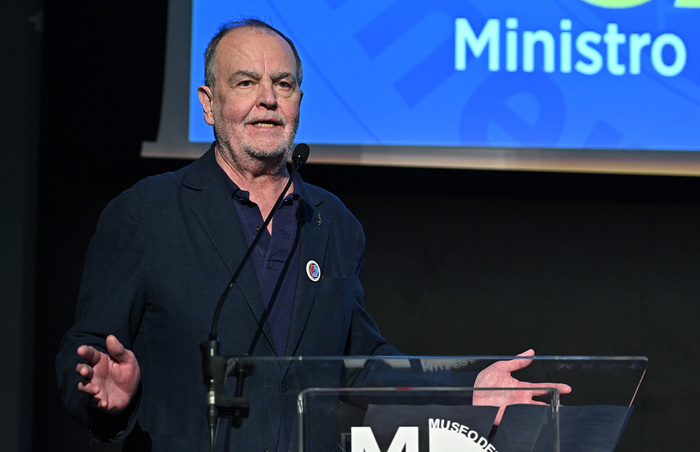The cards for 2022 have already been definitively played: even if the records for December are yet to be known, it will be another year of falling real wages or, if preferred, the fifth consecutive year in which inflation beats wages and beats them by a lot.
A true economic mess that, as things are, paints to stretch in principle to 2023.
It will be proven, once again, that reality can handle the stubbornly fallacious Kirchnerist discourse where incomes beat prices, since three of those five periods correspond to the government of Alberto Fernández and Cristina Kirchner.
To the one of both, together and not separated, in case it is necessary to clarify it.
That happens and much more than that: the worst result in the series shakes informal wage earners, employed in precarious jobs that are always unstable, without basic or equal labor and social coverage.
There are around 5.2 million workers who, on top of that, earn less than half of what those who are in order earn and for tasks that are often similar.
According to calculations by the ACM consultancy, between November 2021 and November 2022 in the sector that the Government defines as vulnerable and therefore priority attention, real wages fell 9.5%.
Compared to January 2018, the numbers of tax officer Nadin Argañaraz speak of a collapse equivalent to 13.3 salaries or a long year of income devoured by inflation.
For registered privates, in white, Argañaraz's account says 8 salaries and 10, for public employees.
It does not seem coincidental that this unequal income structure coexists with another where the employment that really grows is precisely the precarious, unprotected employment located on the margins of the system.
Data from official sources reveal that during the year from the first quarter of 2021 to the first of 2022, that is, at the end of the pandemic, the number of informal wage earners increased by 18%: it went from 4.4 million to 5, 2 millions.
And it advanced until concentrating close to half of the labor force of the country.
The other side indicates that in the same period the number of formal workers, in white, barely increased 2%.
And an expanded vision indicates that since August 2018 the private sector has not added a single formal job to the system or worse, it has dropped a few thousand: data from official sources again sing 6,212,900 for August 2018 versus 6,185. 400 in August 2022.
Crudely put upside down or backwards, the figures do not point to stagnation or regression, but rather a deep and installed decadence in a key territory of the social structure.
With all the cargo it carries and will cost to disassemble, it looks a lot like decay with no way out in sight.
In this space where variables of the same species intersect, there is one that weighs heavily and is obviously called inflation.
It is an abnormality that floats at the heights of 25% per year since 2007 and that has been hanging from the world for 15 years, without anyone or anything putting it in the box.
Now, in the three seasons of the current Kirchnerist cycle, it has accumulated no less than 300%.
It has become a huge bill transferred to the account of those who take office on December 10 and is, at the same time, a sample of the ineffectiveness of price controls and of the regulations, closed seasons and maneuvers that bear the stamp of Axel Kicillof .
Del Kicillof Minister of Economy of Cristina Kirchner in 2015.
It is then hard to find a place through which to sneak in that explanation that Alberto Fernández attributed to economic theorists and translated in his own way.
He said by all accounts: “Much of the inflation is self-constructed.
It's in people's heads."
In other words, a fantasy that if it exists is the responsibility of others, and that the next one happens.
And what follows looks akin to more of the same if not directly more of the same: a mockery of the Fair Prices plan launched in November, only instead of a 4% ceiling on increases it now has a 3.2% ceiling. %.
The question is that the index begins with the 3 promised by Sergio Massa.
About the results of Fair Prices 1, a couple of INDEC sheets from November and December speak.
They show that of the 40 products considered, most of their essential type, there were only 7 in one case and 4 in the other where the 4% limit was respected.
In other words, more than 30 products or 75% jumped the fence.
The Government replied by complying or failing, in its own way, to pay for accessions with import permits at the official exchange rate.
A crucial key to the deal: official dollar at $188 against blue dollar at $379 or cash with legal settlement at $367.
In the Chamber of Commerce and Services they complained because only 25% of the companies that entered the plan got the benefit.
In the automotive sector, they say that half of the applications were approved and among SMEs the message is "fix yourselves as you can."
The backdrop is in the form of a known problem and it is called scarce reserves, which just as they enter the Central Bank head towards the exit door.
According to reports from specialists, the net stock of foreign currency, let's say available, amounts today to around US$ 5,000 million.
It covers a month of imports, according to the already tight amount of December and less than fifteen days, according to the bulky amount of June.
The rule used by specialists says 4 months of imports, which implies net reserves of around US$ 27,000 million.
Thus, based on the monthly average for 2020, we are facing a hole of a comfortable US$20 billion.
Without further ado, Massa's problem, which is also a problem for his political aspirations, appears clearly in the inflation projections for January: they report close to 6%.
With rates, meat and other condiments, those of February and March would be around 6%.
For better understanding, the Fair Prices 2 with a ceiling of 3.2% per month runs from February 1 to June 30.
And in case a political rivet is needed, the PASO are still planted on August 13.
Returning to Fernández's “self-constructed inflation”, a financial festival around the monumental State debt tells a version of reality very different from the one proclaimed by the President, nothing fanciful and crudely concrete.
Encina, it's for a lot of money.
The question consists of refinancing an impressive 13.8 trillion pesos that mature in 2023 and have a very strong fact nailed down: 80% of that debt is indexed by inflation or by the official dollar or by a mix of both variables, which means that with such an interest burden and inflation soaring at the end of the year, the 13.8 trillion will have doubled.
Of the same species, the amount of interest averages 1.9 trillion per month, with a peak that exceeds 3 trillion in July.
No self-construction of the big operators: pure distrust and pure uncertainty, coverage at last.
The same thing that the Government accepts in fact, when it validates such conditions.















